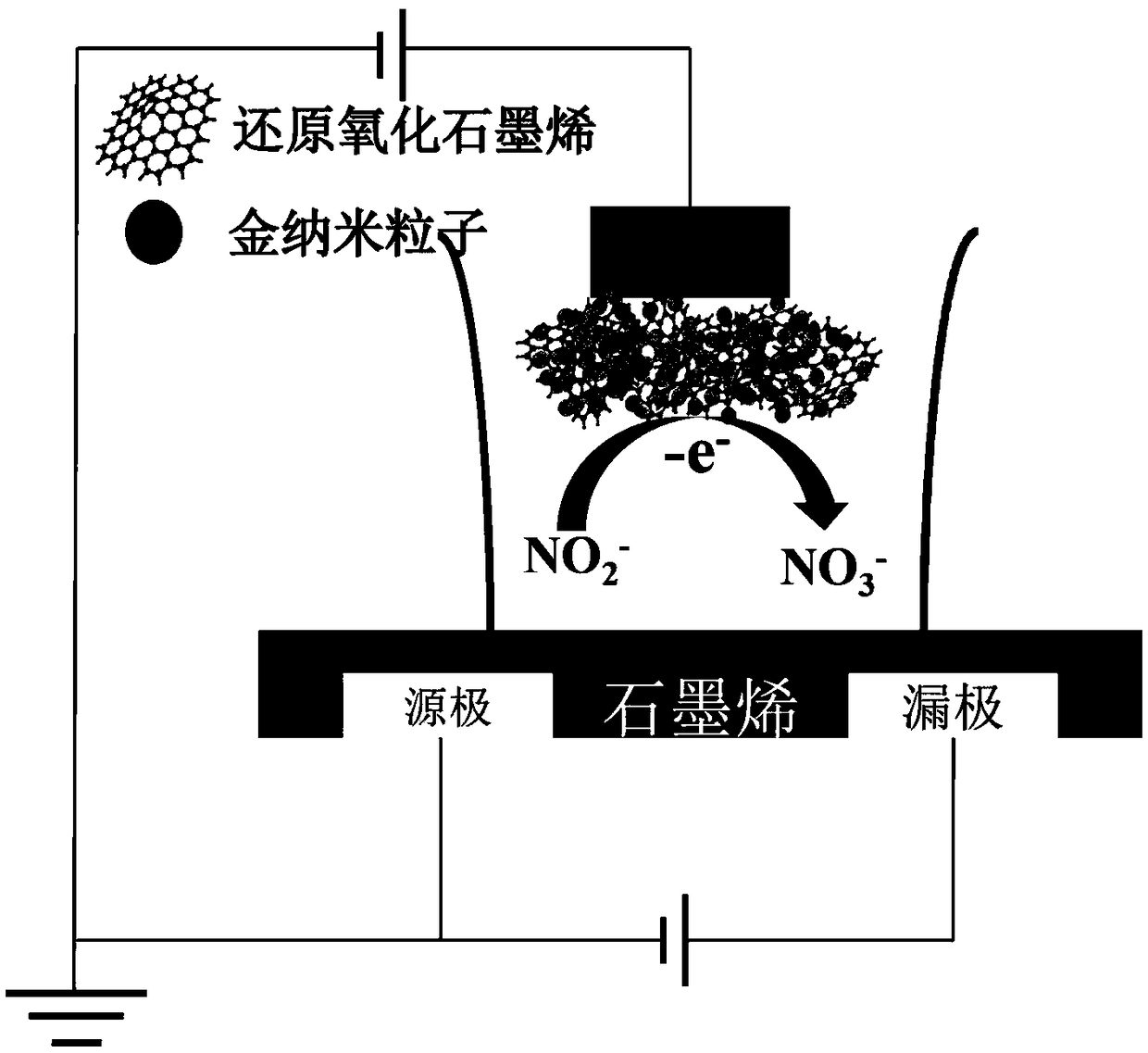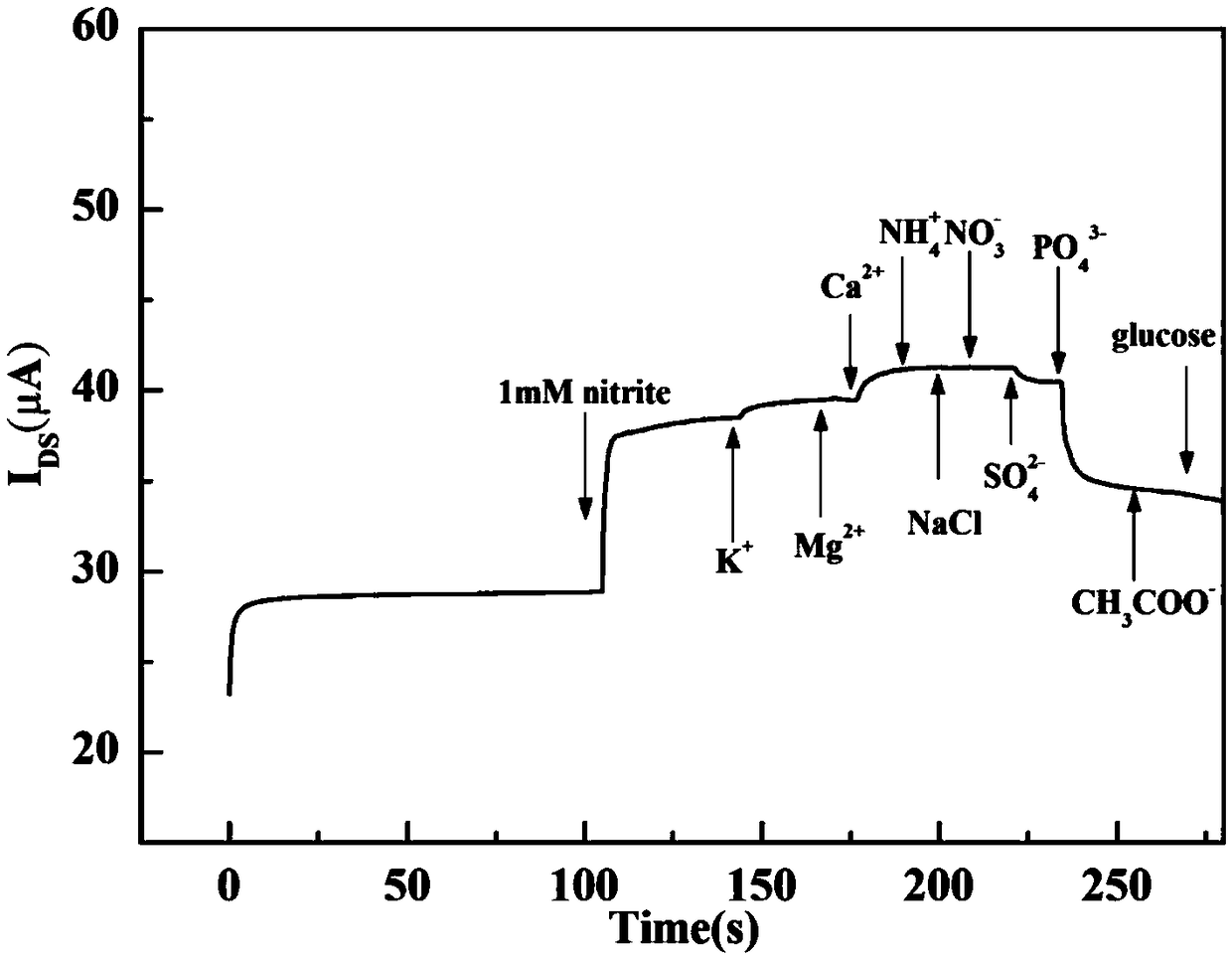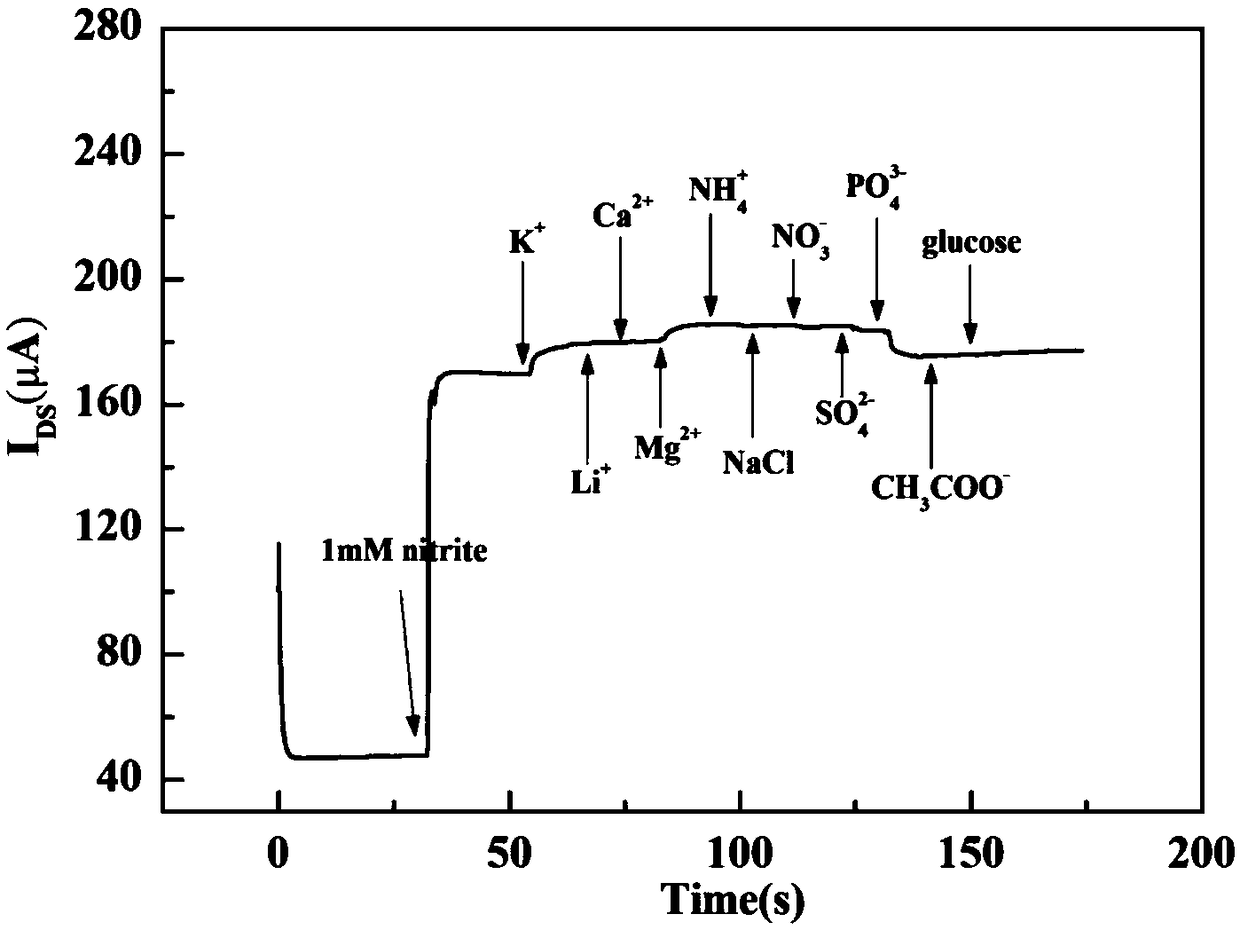Electrochemical transistor sensor with anti-interference performance, anti-interference method and application thereof
A transistor and electrochemical technology, applied in the field of electrochemistry, can solve the problems of unsatisfactory anti-interference, poor selectivity and anti-interference ability of electrochemical transistor sensors, etc., and achieve the effect of improving anti-interference and solving anti-interference
- Summary
- Abstract
- Description
- Claims
- Application Information
AI Technical Summary
Problems solved by technology
Method used
Image
Examples
preparation example Construction
[0024] The preparation method of the electrochemical transistor sensor, the main steps are as follows:
[0025] In the first step, a chromium layer and a gold layer are plated on the substrate, and the gold layer overlaps the chromium layer as the electrodes of the electrochemical transistor sensor, and the source and drain are respectively selected, and the electrode between the source and the drain is the chemical transistor sensor channel;
[0026] In the second step, the single-layer graphene is transferred to the channel of the electrochemical transistor sensor obtained in the first step by wet transfer, and the source, drain and channel of the electrochemical transistor sensor with the single-layer graphene as the channel are obtained. ;
[0027] The third step is to electrodeposit nanocomposite particles of gold and graphene on the cleaned glassy carbon electrode by cyclic voltammetry as the gate of the electrochemical transistor sensor;
[0028] Fourth, a Nafion film...
Embodiment 1
[0039] An electrochemical transistor sensor with anti-interference performance, its difference from the comparative example is: a Nafion film protective layer is provided on the channel, and the specific method is: by dripping 10 μL of mass concentration of 0.5wt on the graphene channel % Nafion solution to form a protective layer of Nafion film.
[0040] In order to verify the anti-interference performance of the electrochemical transistor sensor with anti-interference performance, several common interfering substances were also selected: K + , Ca 2+ , Mg 2+ , NH 4 + , Cl - , NO 3 - , SO 4 2- 、PO 4 3- 、CH 3 COO - Carry out selectivity test with glucose, the specific method is as follows:
[0041] Setting the V of the SourceMeter DS = 0.05V, V G =0.8V, the electrochemical transistor sensor with anti-interference performance is immersed in the buffer solution, and the sodium nitrite solution of 1mM and common interfering substances: K + , Ca 2+ ,Mg 2+ ,NH 4 ...
Embodiment 2
[0044] An electrochemical transistor sensor with anti-interference performance, its difference from the comparative example is: a polysaccharide film protective layer is provided on the channel, and the specific method is: drop 15 μL of mass concentration of 50 mg / mL of chitosan solution was used to form a protective layer of chitosan film by uniform gel method.
[0045] In order to verify the anti-interference performance of the electrochemical transistor sensor with anti-interference performance, several common interfering substances were also selected: K + , Ca 2+ , Mg 2+ , NH 4 + , Cl - , NO 3 - , SO 4 2- 、PO 4 3- 、CH 3 COO - Carry out selectivity test with glucose, the specific method is as follows:
[0046] Setting the V of the SourceMeter DS = 0.05V, V G =0.8V, the electrochemical transistor sensor with anti-interference performance is immersed in the buffer solution, and the sodium nitrite solution of 1mM and common interfering substances: K + , Ca 2+...
PUM
 Login to View More
Login to View More Abstract
Description
Claims
Application Information
 Login to View More
Login to View More - R&D
- Intellectual Property
- Life Sciences
- Materials
- Tech Scout
- Unparalleled Data Quality
- Higher Quality Content
- 60% Fewer Hallucinations
Browse by: Latest US Patents, China's latest patents, Technical Efficacy Thesaurus, Application Domain, Technology Topic, Popular Technical Reports.
© 2025 PatSnap. All rights reserved.Legal|Privacy policy|Modern Slavery Act Transparency Statement|Sitemap|About US| Contact US: help@patsnap.com



